India, a country with many different cultures and a long history, is filled with places that show its past. From old temples to grand palaces, these famous places show India’s architecture, religion, and culture. If you’re going to visit this amazing country, here are the top 10 cultural landmarks in India. They will take you back in time and show you India’s traditions.
- 1. Taj Mahal, Agra – The Symbol of Eternal Love
- 2. Jaipur’s Amer Fort – The Majestic Rajput Palace
- 3. Varanasi Ghats – The Spiritual Heart of India
- 4. Qutub Minar, Delhi – India’s Tallest Brick Minaret
- 5. Khajuraho Temples, Madhya Pradesh – Architectural Marvels of Erotica
- 6. Red Fort, Delhi – The Pride of Mughal Empire
- 7. Mysore Palace, Karnataka – A Royal Residence
- 8. Meenakshi Temple, Madurai – A Dravidian Architectural Wonder
- 9. Ajanta and Ellora Caves, Maharashtra – Ancient Buddhist and Hindu Art
- 10. Hampi, Karnataka – The Ruins of a Lost Empire
- FAQs
1. Taj Mahal, Agra – The Symbol of Eternal Love
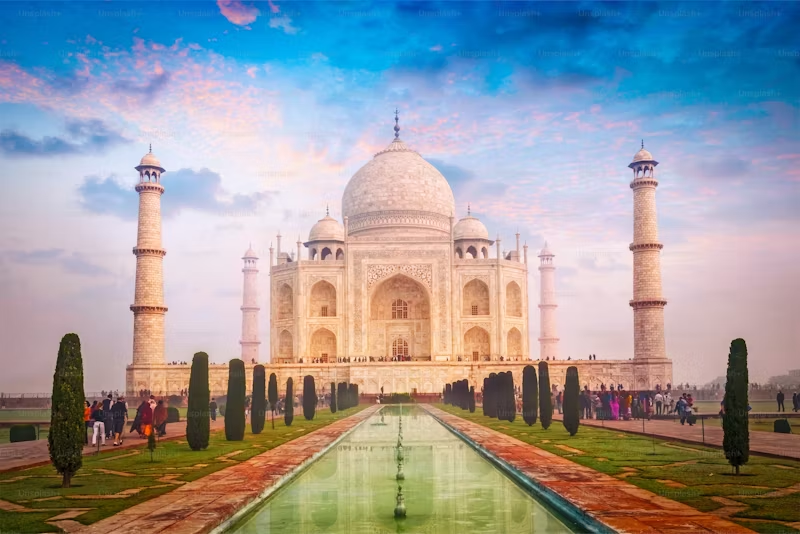
The Taj Mahal is a very famous white marble tomb. It’s one of India’s most special places and is on the UNESCO World Heritage list. Mughal Emperor Shah Jahan built it to remember his wife Mumtaz Mahal. This beautiful building is a sign of love and dedication. Its detailed design, with precious stones and a symmetrical garden, draws millions of people every year.
Tip: Go to the Taj Mahal early in the morning to avoid lots of people and see the sunrise over this beautiful monument.
2. Jaipur’s Amer Fort – The Majestic Rajput Palace
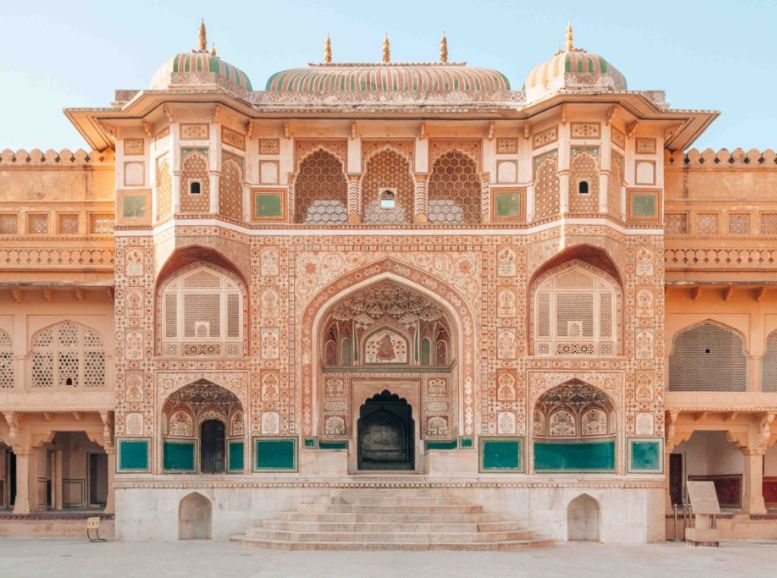
Amer Fort sits on a hill in Jaipur. It’s a beautiful mix of Rajput and Mughal styles. This big fort, made of red sandstone and marble, has detailed carvings, beautiful courtyards, and rooms filled with mirrors. The Sheesh Mahal (Hall of Mirrors) is especially amazing. It shows the beautiful art of that time.
Tip: Take an elephant ride or jeep ride up to the fort’s entrance for a special experience.
3. Varanasi Ghats – The Spiritual Heart of India
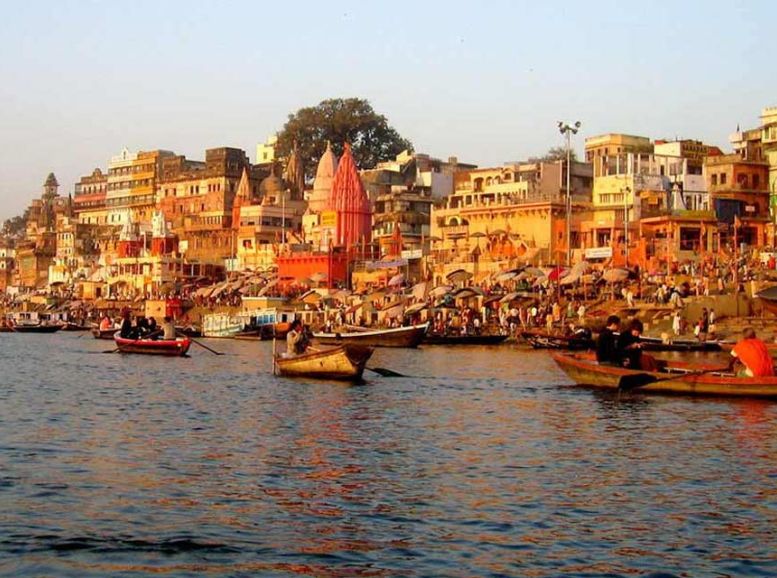
Varanasi, a city on the holy Ganges River, is one of the oldest living cities in the world. It’s a very important spiritual place. The ghats (steps by the river) are where people come to do rituals and get blessings. The Dashashwamedh Ghat and Manikarnika Ghat are two of the most famous ghats. Every evening, the Ganga Aarti ceremony is a beautiful show of devotion and light.
Tip: Go to the Ganga Aarti at sunset for a peaceful and spiritual experience.
4. Qutub Minar, Delhi – India’s Tallest Brick Minaret
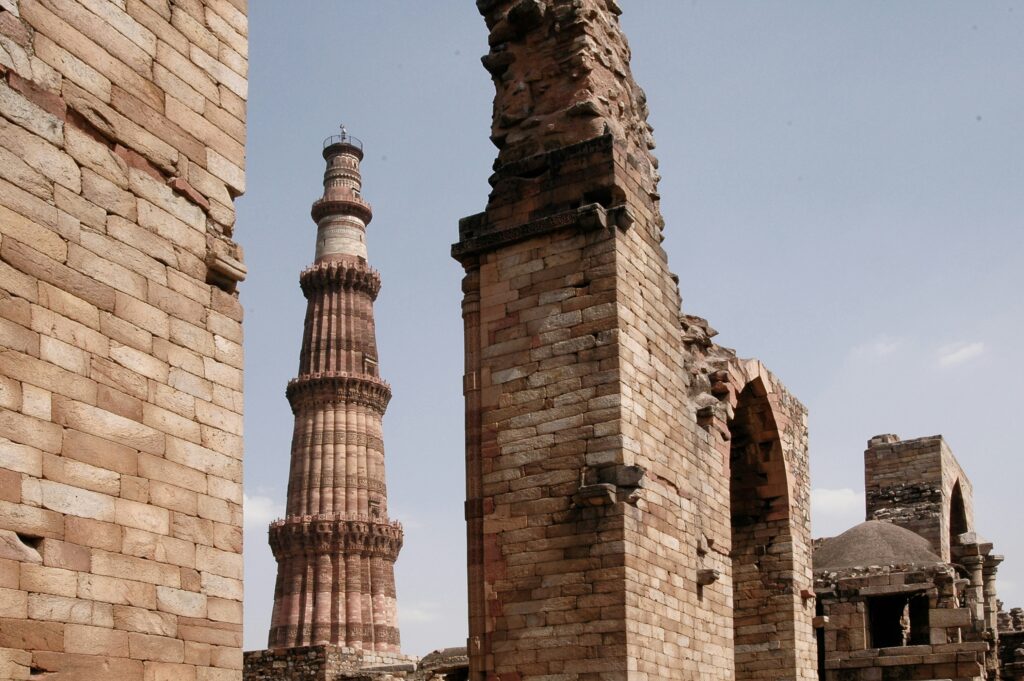
The Qutub Minar in Delhi is a very tall 73-meter tower. It shows the amazing architecture of the Delhi Sultanate. Built in the 12th century, this UNESCO World Heritage Site has beautiful carvings and verses from the Quran. The Qutub Complex also has the Iron Pillar, famous for not rusting.
Tip: Go to the Qutub Minar in the evening to see its beauty under the night sky.
5. Khajuraho Temples, Madhya Pradesh – Architectural Marvels of Erotica
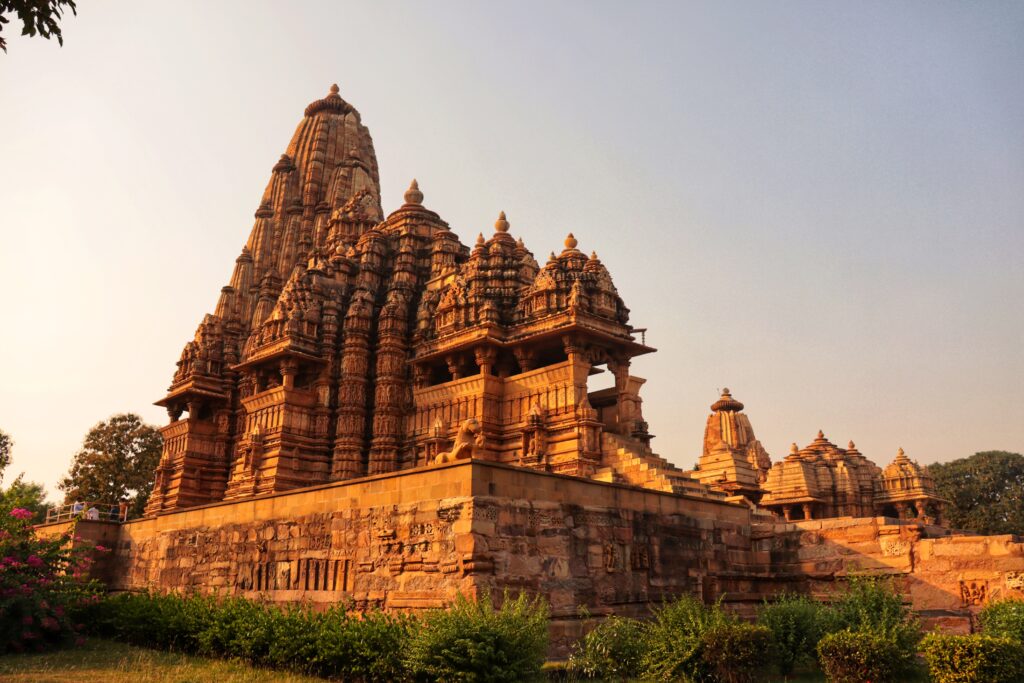
The Khajuraho Temples are amazing examples of medieval Indian architecture. They’re famous for their beautiful erotic sculptures. Built by the Chandela dynasty between the 10th and 12th centuries, these temples show a mix of spirituality, art, and sensuality. The temples are for both Hinduism and Jainism, showing India’s respect for different religions.
Tip: Don’t miss the Kandariya Mahadev Temple. It’s the biggest and most detailed of the temples.
6. Red Fort, Delhi – The Pride of Mughal Empire
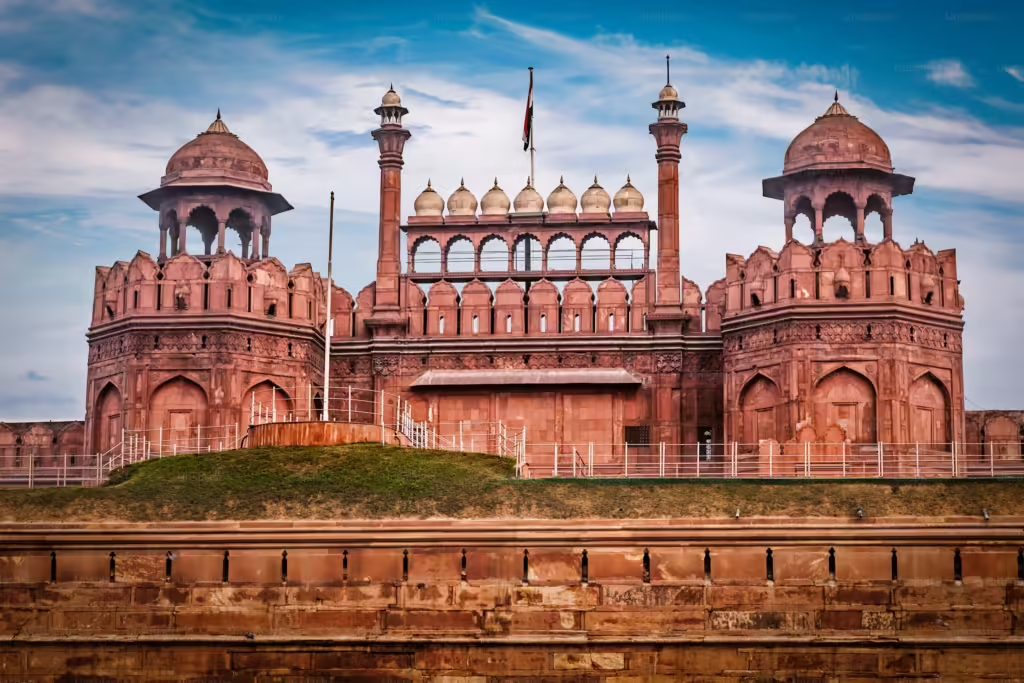
The Red Fort in Delhi is a symbol of India’s long history. It’s a UNESCO World Heritage Site and was the main home of Mughal emperors for more than 200 years. The fort is a mix of Persian, Timurid, and Indian architecture. The beautiful Lahore Gate and the Diwan-i-Aam (Hall of Public Audience) are major attractions inside the fort.
Tip: Go to the Red Fort during India’s Independence Day celebrations when the Prime Minister talks to the nation from its ramparts.
7. Mysore Palace, Karnataka – A Royal Residence
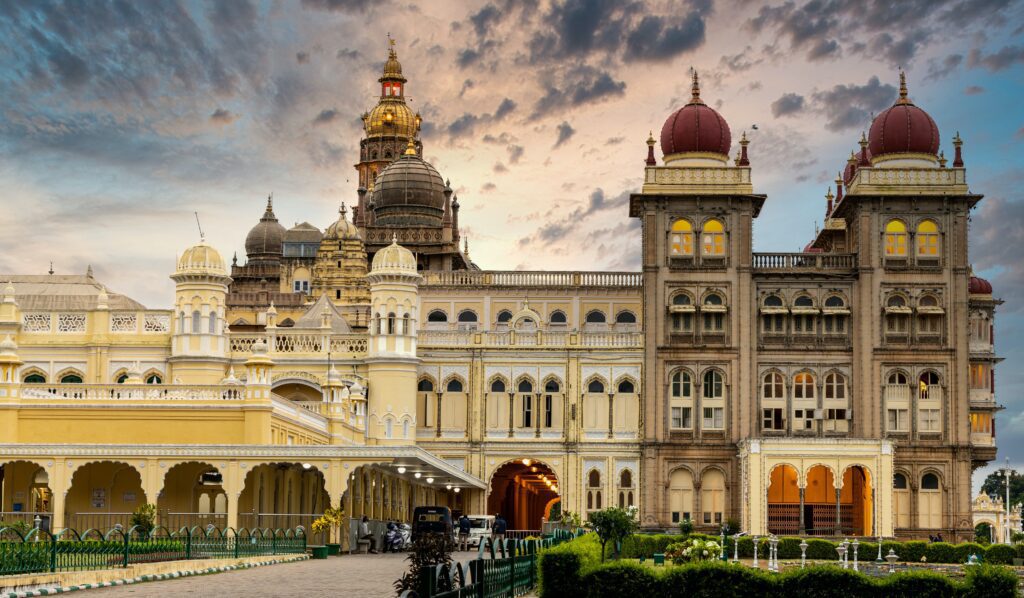
The Mysore Palace, also called the Amba Vilas Palace, is one of the biggest and most beautiful royal homes in India. This grand palace is a mix of Hindu, Muslim, Rajput, and Gothic architecture. Inside, you’ll find stained glass, detailed wood carvings, and paintings that show the wealth of the Wadiyar dynasty. The palace is lit up every Sunday evening, making it a stunning sight.
Tip: Plan your visit to match the Dussehra Festival when the palace has big parades and cultural events.
8. Meenakshi Temple, Madurai – A Dravidian Architectural Wonder
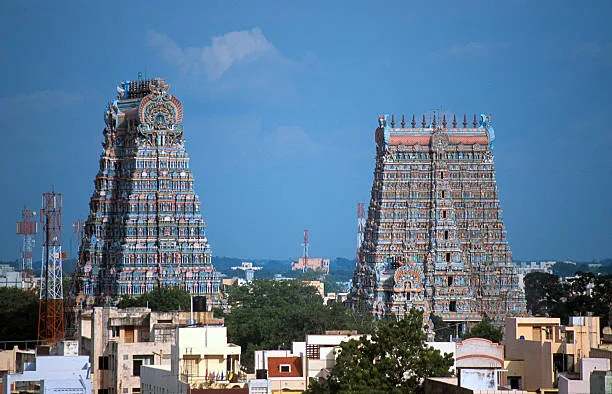
The Meenakshi Temple in Madurai is dedicated to Goddess Meenakshi and Lord Shiva. It’s a beautiful example of Dravidian architecture. This old temple, with its tall gopurams (gateway towers), is decorated with thousands of colorful sculptures. The temple complex is very big, with shrines, halls, and ponds. Each part represents a different part of Tamil culture and devotion.
Tip: Explore the 1000 Pillar Hall, a beautiful example of craftsmanship and devotion.
9. Ajanta and Ellora Caves, Maharashtra – Ancient Buddhist and Hindu Art
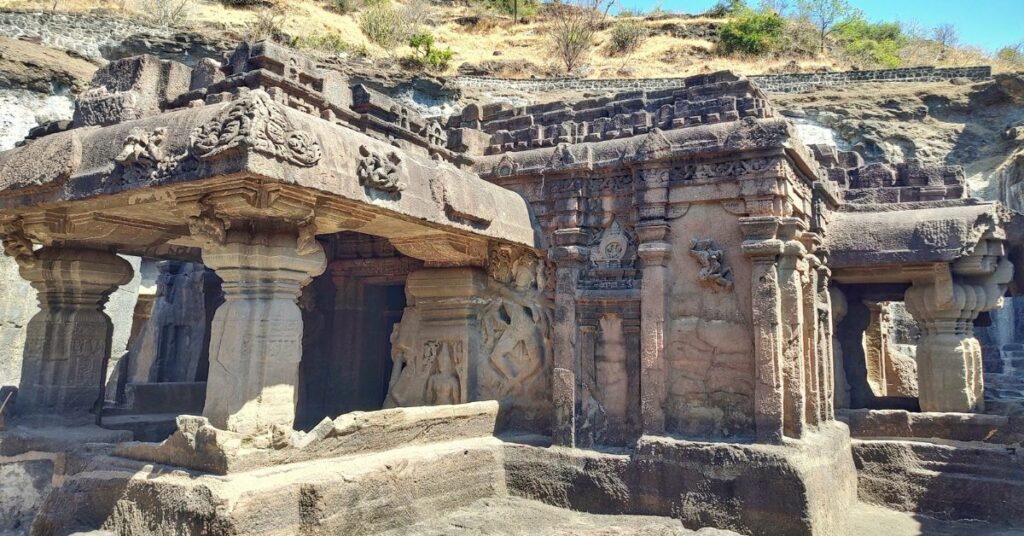
The Ajanta and Ellora Caves are UNESCO World Heritage Sites. They’re some of the most amazing rock-cut temples and monasteries in the world. The Ajanta Caves are famous for their old Buddhist paintings, while the Ellora Caves have Hindu, Buddhist, and Jain temples. The Kailasa Temple at Ellora, carved from one piece of rock, is a truly amazing piece of architecture.
Tip: Plan to spend a whole day exploring both cave complexes. They’re full of art, history, and spirituality.
10. Hampi, Karnataka – The Ruins of a Lost Empire
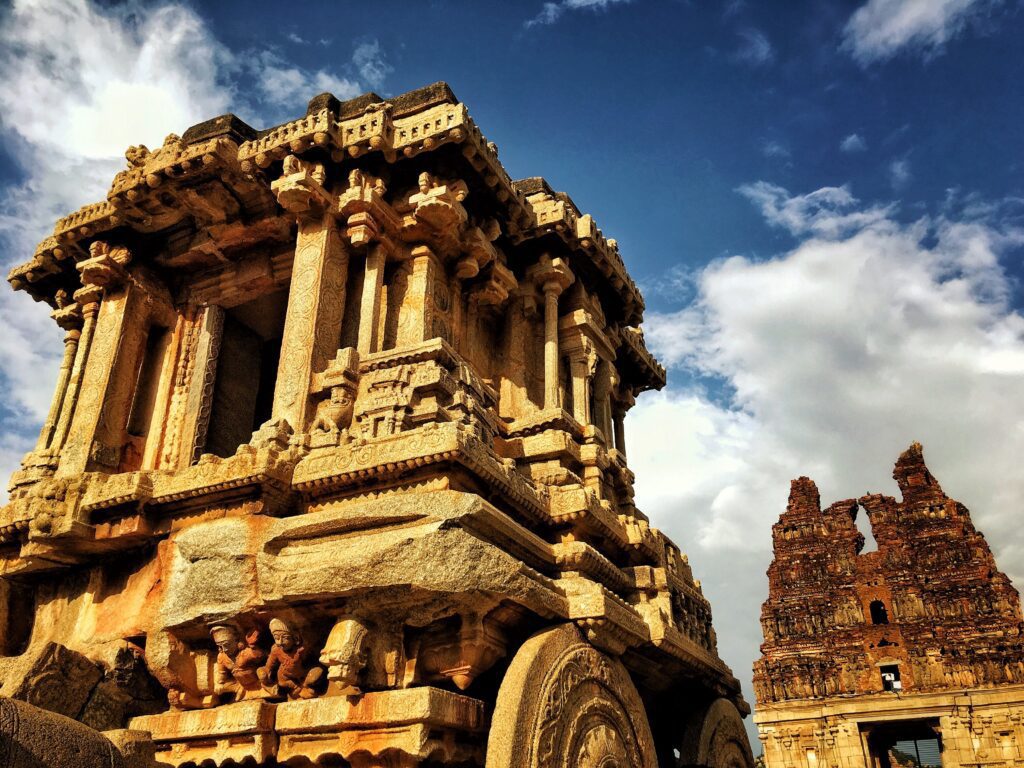
Hampi was once the capital of the powerful Vijayanagara Empire. Now, it’s a UNESCO World Heritage Site and a big outdoor museum of ruins. The old temples, palaces, and market streets of Hampi tell the story of a once-prosperous empire. The Virupaksha Temple and the Vijaya Vittala Temple, with its famous stone chariot, are some of the most important things to see.
Tip: Visit during the Hampi Festival to experience cultural performances and see what life was like in ancient times.
Conclusion, cultural landmarks in India
India’s cultural landmarks stand as vibrant testaments to its incredibly rich and diverse heritage. From the awe-inspiring palaces of Rajasthan to the soul-stirring ghats of Varanasi, each site offers a captivating journey through centuries of history, art, and architecture. As you plan your Indian adventure, consider these top 10 cultural gems to weave into your itinerary. To delve deeper into each destination and craft the perfect travel experience, head over to Xplro.com, your one-stop shop for exploring India’s hidden wonders and iconic must-sees.
FAQs
1. When is the best time to visit cultural landmarks in India?
- The best time to explore cultural landmarks in India is during the cooler months, from October to March. The weather is pleasant, making sightseeing more enjoyable. However, certain places like the hill forts of Rajasthan or the temples in southern India can be experienced year-round.
2. Should I book tickets in advance for cultural landmarks in India?
- For popular cultural landmarks in India such as the Taj Mahal or Red Fort, it is recommended to book tickets in advance, especially during peak tourist seasons. Online booking is available for many of these sites, helping you skip long lines and secure your spot.
3. Are guided tours available at cultural landmarks in India?
- Yes, guided tours are widely available at most cultural landmarks in India. These tours provide deeper insights into the history and architecture of the landmarks. Additionally, audio guides are available at major sites like the Qutub Minar and Taj Mahal, enhancing your experience.
4. What should I wear when visiting religious cultural landmarks in India?
- When visiting religious cultural landmarks in India, it’s important to dress modestly. Both men and women should ensure their shoulders and knees are covered, as a sign of respect. Certain places, like temples, may also require visitors to remove their shoes before entering.
5. Is photography allowed at cultural landmarks in India?
- Photography is permitted at most cultural landmarks in India, though some sites may charge an additional fee for using cameras. However, at certain religious sites, such as inside temples or during sacred rituals, photography may be restricted or prohibited. Always check local guidelines.
6. Are cultural landmarks in India crowded during festivals?
- During festivals, some cultural landmarks in India may experience larger crowds. For example, the Varanasi Ghats during the Ganga Aarti or the Mysore Palace during Dussehra can be quite busy. If you plan to visit during a festival, it’s a good idea to arrive early and check for any special access rules.
7. How long does it take to explore cultural landmarks in India?
- The time needed to explore cultural landmarks in India depends on the size of the site. Larger landmarks like Hampi or the Ajanta and Ellora Caves may take a full day, while smaller landmarks such as the Qutub Minar or India Gate can be explored in a couple of hours.
8. Is it safe to travel alone to cultural landmarks in India?
- Yes, it is generally safe to travel alone to most cultural landmarks in India. Popular tourist sites are well-maintained and secure. However, it’s advisable to stay cautious, avoid isolated areas after dark, and keep your belongings safe, especially in crowded places.
9. What are some lesser-known cultural landmarks in India worth visiting?
- Beyond the famous sites, there are several lesser-known cultural landmarks in India that are worth exploring. These include the Rani ki Vav (Queen’s Stepwell) in Gujarat, a beautifully carved stepwell, and the Chittorgarh Fort in Rajasthan, one of the largest forts in India.
10. What festivals are linked to cultural landmarks in India?
- Many cultural landmarks in India host vibrant festivals, such as the Dussehra Festival at Mysore Palace or the Dev Diwali at the Varanasi Ghats. These events offer a unique opportunity to experience India’s traditions and see these landmarks in a new light.
11. What is the historical importance of the Khajuraho Temples?
- The Khajuraho Temples are significant cultural landmarks in India because of their stunning depiction of ancient art, spirituality, and architecture. These temples, built between the 10th and 12th centuries, are known for their intricate carvings and are an outstanding example of India’s rich heritage.
12. Do I need permits to visit certain cultural landmarks in India?
- Most cultural landmarks in India do not require permits. However, if you’re visiting areas like Arunachal Pradesh or the Andaman Islands, special permits might be needed. Always check local regulations before visiting remote or restricted areas.






